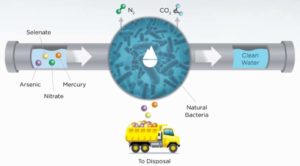Industrial Water Media
Increased regulations from governing bodies now require extra attention from power plants when managing the coal ash disposal process. A recent ruling by the EPA provided a comprehensive set of requirements for the safe disposal of coal ash and was enacted to clean up faulty surface
…
Read MoreThe use of automated monitoring tools in industrial plant management has become one of the most important innovations for companies over the past decade — especially in the water and wastewater industries.
The latest advances in technology yield several benefits, including increased plant safety and system efficiency.
…
Read MoreMaking this job challenging, however, was the fact that color units for the surface feedwater ranged from 180 to 420 units, well in excess of the treated water requirement of 5 or fewer units.
Trees, leaves and other organic matter continually decay in the surface water that
…
Read MoreWhen commissioning a new power plant, requirements for purified water can be large—often more than an unfinished plant can supply. When it’s time to bring in outside help, proper planning can help avoid problems and keep budgets under control.
With all the complexity inherent in the commissioning
…
Read More





